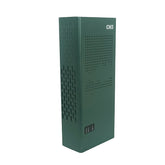Can Wi-Fi jammers really protect our privacy?
As you read our blog from time to time, you've probably noticed that we consider smartphones to be the greatest threat to our privacy. That is the main reason we try to highlight the privacy and security issues of these portable devices. The main reason they are so dangerous is for people. Users tend to share sensitive data with this device too much and run mobile banking apps. Therefore, hackers attack smartphones to look for personal information.
You need to know that there is no such thing as an absolutely secure smartphone. All of these modern gadgets have their own weaknesses. Some of them exploit weaknesses in mobile operating systems, and some exploit gaps in security protocols. But the facts still remain. Most Vulnerabilities – User Responsibility.
The situation of malicious applications in the most popular mobile operating systems proves this fact. As you may know, to install the app on your Android smartphone, you need to approve all the permissions that the app needs to function properly. Also, most users haven't read them, so the malware invades Android and approves everything to install the app faster. At that point, miss the fact that the app wants to send premium SMS to short phone numbers.
The situation on iOS is almost the same. The Apple Store has very strict moderation rules that require testing and approving all apps before entering the store itself. The easiest way for malware to get into your iPhone or iPad is to use a third-party repository. Therefore, you can say that you install the virus yourself.

The most dangerous vulnerabilities in iOS and Android are known, but the vulnerabilities in the Windows Phone OS were fairly rare in the media and on the Internet. But there is one. Microsoft Security Advisory is vulnerable to the PEAP-MS-CHAPv2 protocol (a protected extended authentication protocol using Microsoft Challenge Handshake Authentication Protocol Version 2) used in the WPA2-based wireless network authentication process for Windows Phones. I decided that there was.
When a smartphone attempts to see a hotspot, a malicious user can read the authentication data and use it to control the device. Wi-Fi is vulnerable on its own, but in combination with this smartphone bug, it can steal user's personal information and access mobile banking information.
Microsoft does not yet have data on the potential damage caused by this bug, nor has it been updated or patched. Instead of fixing the problem, Microsoft has released a step-by-step guide on how to configure the device to avoid this error.
However, there is no guarantee that it will work. To keep your personal information safe, we recommend avoiding public hotspots and using cell phone jammer. In this case, this mistake doesn't just work. It's important to remember that your personal information is really valuable and many large companies make huge profits on their sales, so you need to protect it.













